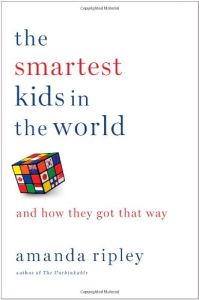Join getAbstract to access the summary!

Join getAbstract to access the summary!
Amanda Ripley
The Smartest Kids in the World
And How They Got That Way
Wall Street Journal Books, 2013
What's inside?
Three American teenagers describe their high-school experiences in Finland, South Korea and Poland.
Recommendation
Journalist Amanda Ripley followed three US teens – Kim, Eric and Tom – as they studied abroad for a year in Finland, South Korea and Poland, respectively, all of which outrank the US on the Program for International Student Assessment (PISA), a test measuring teenagers’ critical thinking skills in reading, math and science. At a highly individual level, both Ripley and her subjects discovered profound differences between education in the US and in other countries. The students enjoyed greater freedom and autonomy overseas. They also faced higher expectations and more challenging coursework. They found that foreign teachers don’t coddle kids and that failure is part of learning. High school sports don’t exist: Students who want to play join community teams. Ripley interjects PISA rankings and educational reform information into her story, which makes the narrative episodic, but it remains fascinating and illuminating. She portrays a unique student perspective, showcases how cultural differences affect education and examines the cultural patterns that hold US kids back and spur teens from other nations. getAbstract recommends her exploration to school administrators, politicians, teachers, parents and students.
Summary
About the Author
Amanda Ripley writes for Time magazine and The Atlantic. Her first book, The Unthinkable: Who Survives When Disaster Strikes – and Why, was published in 15 countries.

















Comment on this summary